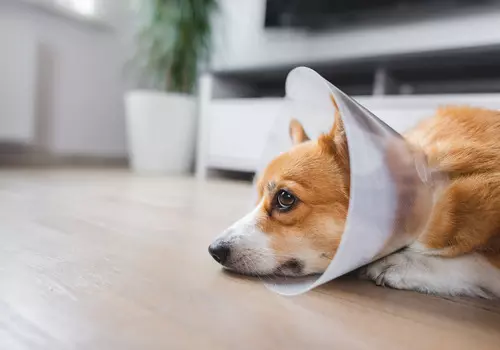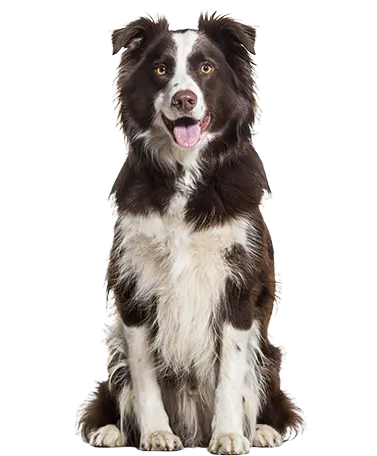Reviewed by Dr. Sarah Yosry
Updated on 10/05/2024
Reading time 4 min.
Overview
Severity: Low
Life stage: All
The length of time your dog must wear a cone depends on the ailment being treated. For instance, a dog wearing a cone after being neutered does not need to wear one for as long as a dog wearing a cone following eye surgery.
One of the most common errors made by dog owners is prematurely removing the cone. This can hinder the healing process since your dog can lick and scratch the wound, potentially aggravating it.
Even if your dog hates the cone, you must continue to wear it for as long as necessary.
If you wonder when it is safe to remove the dog’s cone after a neuter or other treatment, this article breaks down cone-wearing length by health condition. We also discuss the dangers of prematurely removing the cone, when it is safe to do so, alternative dog cones, and more. Let’s get started!
Why Should Dogs Wear Cones?
As a barrier, dog cones, also known as Elizabethan collars or E-collars, prevent your dog from licking or scratching a wound, itching skin, topical treatment, or other ailments. Even the most well-behaved dogs frequently lick and scratch their wounds. Therefore, the cone must remain on your dog until he fully recovers.
How long should a dog wear a cone after neuter?
Your dog should wear the cone until fully healed. The cone of shame forms a protective barrier between the dog’s head and mouth and the rest of its body. It keeps your dog from tearing open its incision by biting, licking, or scratching. Thus, a cone is an excellent means of preventing your dog from injuring itself.
When may I remove the cone following spay?
Ideally, the cone should remain on the dog until it is completely healed or until the stitches are removed. Experts recommend leaving a dog’s cone on for at least 10 to 14 days after surgery. Most sutures and staples are left in place for 10-14 days. The cone may be removed for brief intervals on the fifth day under your direct supervision. However, it is recommended to leave it on 24 hours a day.

Is a cone required following the spaying or neutering of a dog?
After your dog has undergone spay surgery, it must be restrained for fourteen days. Restrictions prohibit running, leaping, bathing, and solo play in the backyard. As the wound heals, the area around the wound will grow itchier for your dog.
The easiest way to prevent your dog from biting and licking is always to keep the cone on.
Consider our handcrafted, comfy, and water-resistant MillionDogs healing cone if your dog is restless and struggling to maintain the cone’s position.
How long does it take for a dog to heal after being spayed or neutered?
Most spay/neuter incisions heal entirely between 10 to 14 days. This corresponds to the moment when sutures or staples must be removed. Here are the signs that your dog’s incision has healed:
- There is no longer any redness or swelling at the incision.
- No staples or sutures are required to hold the dog’s wound together.
- There should be no soreness or irritation near your pet’s incision site.
- The incision site of your dog should be free of discharge.
Conclusion
Remember that the healing cone’s primary duty is protection. Ensure that the incision is healing correctly by inspecting it twice every day. If the wound becomes inflamed, consult your veterinarian immediately.
Today, spaying or neutering your dog is a fundamental component of dog ownership. Give your dog around two weeks of tender attention while it recovers. You will enjoy many years of companionship without the risk of becoming pregnant.
Give your dog the gift of a healthier future. Dive into our Spaying & Neutering services.
Visit our Pet Clinic in Dubai for advanced and compassionate pet care. Explore our website to learn more about our services and how we can help keep your pets healthy and happy.
Share this, choose your platform!
Writen by
Dr. Sarah Yosry
DVM
A product of a rich Australian/Egyptian heritage, Dr. Sarah Yosry stands as a testament to the union of diverse cultures and a shared love for animals….


